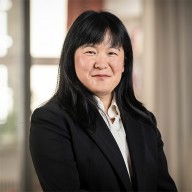

MERICS China Security and Risk Tracker 04/2022
Focus Topic
China’s new military leadership is ‘red’ and combat-focused
by Helena Legarda
The 20th Party Congress in October cemented Xi Jinping’s position at the center of political power in China. He has stacked the Politburo and its Standing Committee with loyalists, outlined a policy program that revolves around his priorities,1 and amended the party constitution to formalize his position as the core of the party.2 As one of the key instruments of CCP power, the People’s Liberation Army (PLA) has not escaped this process towards greater concentration of power.
The party congress has reaffirmed many of the changes to the PLA put forward during the previous party congress and implemented in the years since.3 The main goal is still to turn the PLA into a world-class force by mid-century. Strengthening the party’s leadership over the military is seen as a precondition for building a powerful PLA.
Beyond this statement of priorities, however, the party congress was also the platform for Xi to unveil China’s new Central Military Commission (CMC). The CMC is China’s top military decision-making body, chaired by Xi and reporting directly to the CCP Central Committee. There are no clearly outlined procedures on the selection of CMC members in either the national or the party constitution: the choice is solely at the discretion of the party center. It is therefore important to scrutinize the new lineup for indications of how the PLA and China’s defense policy may develop over the next five years.
Structure and ideology are meant to keep Xi in control
Xi has continued his drive to concentrate control over the PLA in his own hands. He has kept the CMC small, following his decision to shrink it in 2017 from 11 members to the current seven. Besides Xi himself, it has two vice-chairmen and four regular members – the directors of the Joint Staff Department and the Political Work Department, possibly the Minister of Defense, and the head of the CMC’s Discipline Inspection Commission.4 The CMC’s small size makes it easier for Xi to fill it with loyalists and disrupt other factions or patronage networks.
Xi once again appointed two military officers as vice-chairmen. This is a signal that a successor to Xi has not been selected yet and decision-making power remains in his hands. Although it has been the pattern since Xi came to power in 2012, it still represents a break with tradition. While there is no written rule to this effect, previously, the person tapped to succeed the sitting party leader would be named vice-chairman of the CMC a few years before taking over as chairman and party general secretary. Hu Jintao was CMC vice-chairman from 1999-2004, and Xi from 2010-2012.
Growing centralization of power in the PLA was also visible in the renewed emphasis on the Chairman Responsibility System and the “two safeguards” (两个维护). These two concepts complement each other. The “two safeguards” call for maintaining Xi’s position as the core of the party and the centrality of Xi Jinping Thought,5 while the Chairman Responsibility System establishes that all significant issues of national defense must be planned and decided by the CMC chairman. The Chairman Responsibility System is not Xi’s invention – it has been in the PRC Constitution since 1982 – but it has only truly been implemented since 2017. In the Hu Jintao and Jiang Zemin eras, state media sometimes even spoke of a Vice-Chairman Responsibility System, implying that Hu and Jiang were figureheads while their uniformed CMC vice-chairmen ran the PLA.6 This is clearly not the case today.
Political loyalty and personal connections are rewarded
Xi has also made use of his control over the CMC selection process to fill the body with politically reliable generals. Several have personal connections to Xi and owe their career progression to him – likely guaranteeing their loyalty going forward.
As with other party bodies, the CMC’s longstanding – but largely unwritten – norms on promotions have been swept aside for this purpose. Among the CMC members who have retained their seats is Zhang Youxia, now the senior of the CMC’s two vice-chairmen. Zhang is already 72 and should have retired; the usual retirement age for Politburo members is 68. However, he is an old friend of Xi’s as their fathers served in the Civil War together.
By contrast, the new second-ranked vice-chairman, He Weidong, was helicoptered into the position. His appointment defies the normal standards, which require that CMC vice-chairmen first serve as CMC members and are picked from members of the CCP Central Committee. He fulfilled none of these requirements. Personal connections seem to have played a role here as well. He and Xi overlapped in Fujian in the late 1990s and some reports suggest Xi made repeated visits to He’s base in Huzhou while he was governor.7 Another one of the holdovers from the last CMC, Director of the Political Work Department Miao Hua, also has a personal connection to Xi dating back to Fujian in the 1990s.
Combat preparedness takes center stage
The composition of China’s new CMC also points to some of Xi’s operational and force development priorities. Officially, improving the PLA’s ‘jointness’ (or integration between the different services) and combat readiness remain among the key goals of China’s defense policy. The need to improve the PLA’s combat capabilities has only intensified as the party’s perception of the international environment has worsened. Xi was very clear on this point when he visited the CMC’s joint operations command center on November 8. There, he demanded the armed forces “adhere to combat effectiveness as the sole criterion”.
Despite the language in the work report, however, the composition of the new CMC may hinder progress in the development of joint operational capabilities. The last CMC was unusual as it diverged from the PLA Army’s historical domination within China’s military leadership. Members represented almost all the PLA’s services in a move designed to improve the military’s ‘jointness’. The new leadership lineup has reversed this change, returning to a ‘green CMC’ that is dominated by the khaki-clad ground force. It should be noted that most of the 20th CMC’s members have held joint positions in the past – either roles at the top of theater commands or PLA general departments that involve all services. Some, like Miao Hua or Liu Zhenli, have even served in two services.
What is clear is that being able to “fight and win wars” is a top priority for Xi and he is therefore signaling that combat experience matters for ambitious PLA leaders hoping to reach the CMC. The promotion of Liu Zhenli, head of the Joint Staff Department, means that Xi now has two generals with operational experience on the CMC. Both Liu and Zhang Youxia served during the war with Vietnam in the late 1970s and early 1980s. This is remarkable considering that Zhang and Liu are two of barely a handful of PLA generals who have seen combat – a fact that highlights the dearth of operational experience in the Chinese military.
Tensions with the US are likely to worsen
Xi’s military leadership choices reflect growing tensions with Washington, Beijing’s view of the United States as the key adversary intent on containing China, and the increasing fear of conflict, either over Taiwan or elsewhere in the region.
He Weidong’s elevation to the role of second vice-chairman may well be linked to the military’s likely greater focus on Taiwan in the next five years. He has led the Eastern Theater Command – whose brief covers Taiwan – for three years. He was the general in charge of the large-scale exercises launched by the PLA to protest Nancy Pelosi’s August 2022 visit,9 and the PLA Air Force’s almost daily intrusions into Taiwan’s air defense identification zone (ADIZ) since 2020. His promotion does not signal a major policy shift, but it does reflect the new reality in the Taiwan Strait.
The promotion of Li Shangfu, currently director of the PLA Equipment Development Department (EDD), was a surprising move. Li becomes the second EDD director or former EDD director to sit on the CMC at the same time, following in the footsteps of the current vice-chairman Zhang Youxia. While this does not make the EDD into a CMC springboard just yet, it reflects the importance placed on modernizing China’s military equipment and on informatizing of the PLA. Li Shangfu has more than 30 years of experience at the PLA-run Xichang Satellite Launch Center. He has also served with the Strategic Support Force, which is in charge of space, cyber and electronic warfare capabilities.
Li and the EDD were sanctioned by the US under the Countering America's Adversaries Through Sanctions Act (CAATSA) – the only CMC member to be sanctioned. The US imposed the sanctions in 2018 after purchases of Russian Su-35 combat aircraft and S-400 surface-to-air missile systems.10 Li is therefore banned from visiting the United States or using the US financial system. This could prove challenging if Li becomes the new defense minister next March at the National People's Congress – as is expected. Although it is possible for sanctions to be waived by the US administration, Li’s ascent to the post would send a strong signal that Beijing expects the US to lift the restrictions and that it would be willing to sacrifice military-to-military exchanges at the highest level if it does not. If Li is indeed confirmed as Wei Fenghe’s replacement next spring, we should expect greater tensions between the two militaries.
Key Developments of the quarter
Domestic Stability
Xi’s new policy program sidelines social and welfare issues
Xi’s work report to the 20th Party Congress placed a stronger focus on his political priorities: strength and stability, not least for the party. Sections on modernization, self-reliance, and security were longer, while those on welfare and social issues had shrunk or been deleted, to make space for grander topics. In economic governance and social reforms, expect to see more political interference from the top.
Xi’s strategic focus on party building, a still-larger security apparatus, and political objectives taking priority over economic pragmatism is likely to exacerbate instability and uncertainties for all non-state actors, especially for smaller private firms and civil society groups. The work report and its language, also suggests fewer resources for welfare and social security. Xi’s enigmatic “common prosperity” slogan, a reference to closing China’s yawning wealth gap, remains vague and overshadowed by many more references to security and party struggle. Although “common prosperity” was written into the party statute and got several mentions, along with the need to improve redistributive mechanisms, strenuous action seems unlikely. Vast resources are being spent on epidemic prevention and rigid Covid testing regimes, and channeled away from much needed investment in welfare systems such as hospitals, clinics, unemployment and pension systems. China’s still-basic welfare services are falling behind, as population ageing kicks in, growth slows, and the cost of excessive Covid measures drain government coffers.
Trust in a stable economy is also declining. Social and economic disruptions triggered by Xi’s politics-first approach are already beginning to show. China stocks plunged after the 20th Congress, indicating a pessimistic view of China's future among investors. A more politically-directed economic policy brings heightened business uncertainties. This, and strict Covid controls, are driving more entrepreneurs and investors to move assets abroad. The Monetary Authority of Singapore reported in October that the country’s asset management sector surged to record levels in 2021. Affluent Chinese are also voting with their feet: applications from wealthy Chinese for US green cards have risen dramatically in the past few months. Singapore has seen an influx of new arrivals too. One report has predicted China may have one of the world's largest net outflows of millionaires this year.
Security and Defense
Beijing’s national security obsession puts a new focus on strategic deterrence
Xi’s work report devoted a new section to national security and social stability. The term “security” was used 80 times – nearly double the 43 mentions it got in the 2017 report. Furthermore, the new Politburo and Standing Committee is filled with Xi loyalists who have a security background. This focus on security shows China’s path towards securitizing ever more policy areas is set to continue.
For governments and businesses, the message is that Beijing is willing to accept economic costs to defend its stability and its broadening understanding of national security. Economic coercion is not ruled out. Beijing will step up efforts to reduce China’s reliance on the West. As Beijing takes lessons from the West’s response to Russia’s invasion of Ukraine, foreign companies should expect to come under greater political pressure to accept China’s political framework and red lines.
The work report contained new language about establishing a “strong system of strategic deterrence” which has also raised eyebrows. It may signal that Beijing intends to accelerate the ongoing expansion of its nuclear arsenal. China is estimated to have between 200 and 300 nuclear warheads. US government forecasts anticipate that, under current policies, this would rise to around 1,000 by 2030. Faster expansion of China’s nuclear arsenal would contribute to the regional arms race. And with a view to a potential Taiwan conflict, is of particular concern given one of the lessons that Beijing may be learning from Russia’s invasion of Ukraine: that credible nuclear threats can prevent the US and its allies from becoming directly involved.
However, "strategic deterrence” is used far more broadly in Chinese discourse and includes cyber capabilities, autonomous systems and other domains. The phrasing may well refer to China’s ambition to develop its capabilities in new domains to leapfrog US dominance in conventional platforms.
China’s nuclear doctrine does not seem to have changed. Neither has China’s position on the war in Ukraine or its relationship with Russia. The comments Xi made when meeting German Chancellor Olaf Scholz and US President Joe Biden – when he rejected the use or threatened use of nuclear weapons – recap China’s longstanding policy on nuclear weapons. The same view can be found in the 2005 White Paper “China's Endeavors for Arms Control, Disarmament and Non-Proliferation”. Xi’s statement was significant, but did not represent a policy shift. It was likely seen in Beijing as a low-cost way to appear constructive amid the ongoing war in Ukraine without committing to a change of course.
The 20th Congress also added “opposing and deterring separatists seeking ‘Taiwan independence’” to the Party Constitution. Although by no means a new policy or position, enshrining it in this way would complicate any future changes of approach by Xi’s successors.
Geopolitical Competition
China’s period of strategic opportunity is ending, creating risks for foreign actors
Xi’s work report revealed the CCP takes a much glummer view of the international environment than five years ago. Triumphal language about China “standing tall and firm in the East” and enjoying a period of strategic opportunity has given way to an emphasis on the risks and challenges it faces.
Opportunities undoubtedly still exist in the CCP’s eyes, but now they coexist with risks and challenges. Uncertainties and unforeseen factors are rising. The party has an increasingly negative assessment of the intentions of external actors (especially the US) towards China. The report warned that external attempts to blackmail and contain China are rising and may escalate at any time.
However, the CCP’s perception that China’s period of strategic opportunity is ending, or has changed in nature, is not good news for Europe, the US or other like-minded countries. Beijing has prescribed more struggle (or “fighting spirit”, in the official English translation) to respond to these challenges. Although China’s official foreign policy goals and principles remain unchanged, the work report issues a call to strengthen China’s voice in international affairs and its extraterritorial legal toolkit. It stresses the need to invest further in China’s relationships with developing countries – that are already pivotal to Beijing’s approach to geopolitical competition with the West. All of this is to take place under the unassailable leadership of the party.
Meanwhile, expectations for the Belt and Road Initiative (BRI) as a tool of China’s foreign policy appear to have been lowered. The BRI disappeared from the foreign policy section of the work report; it was moved to the economic development section instead. This is probably in recognition of the initiative’s financial limits. The downgrading may also be shaped by the growing international backlash against the BRI’s negative spillovers and rising number of project defaults. Xi’s new initiatives, the Global Development Initiative (GDI) and the Global Security Initiative (GSI) are now much more prominent as foreign policy tools. The BRI is not expected to disappear. Rather, some of its grander strategic goals may be taken over by the GDI.
In short, politics and geopolitical competition with the US will stay front and center in shaping China’s foreign policy over the next five years. Personnel changes announced during the 20th Congress would seem to confirm this; two ‘wolf warrior’ diplomats, Wang Yi and China’s current ambassador in Washington, Qin Gang, seem poised to become the Director of the Central Foreign Affairs Commission and Foreign Minister, respectively.
Europe is struggling to address the global food crisis caused by Russia’s invasion of Ukraine. Food shortages are not expected in Europe, but food shortages across the Middle East and Africa due to very restricted Ukrainian grain exports are driving up instability across Europe’s southern neighborhood. Greater migration flows towards the EU might be one potential consequence. The energy crisis is worsening the global food crisis, as some European agricultural producers have decided to shut down or cut back operations this winter to reduce costs.
China finds itself in a comparatively better position as it has avoided the immediate impact of the crisis. China has high food production levels and the world’s largest grain reserves, thought to hold roughly 69 percent of global corn reserves, 60 percent of rice, and 51 percent of wheat.
Beijing would appear well placed to intervene to alleviate the crisis, but so far it has been reluctant to do so. This unwillingness stems from fears of hazarding China’s own food supplies and the party’s political stability. By contrast, the EU has already committed over 7 billion euros in humanitarian and emergency relief.
Instead, Beijing is focused on increasing its food imports to guarantee its own food security against long-term risks due to rising demand, soil exhaustion, pollution, and problems with freshwater resources. China’s approach, however, may worsen the global food crisis and has implications for Europe:
1.) China’s food imports may cause commodity prices globally to rise even further, escalating damage from the crisis. A temporary reduction in China’s imports would certainly help mitigate rising global food prices, but seems unlikely.
2.) China increasingly looks to African countries to help meet its rising food needs, in return for debt alleviation and agricultural investment. The longer-term benefits to African nations are obvious. But in the short run they may find it worsens food shortages at home. Increasing Africa’s dependence on China could also turn food security into an arena of competition.
For more on this topic, see: https://merics.org/en/short-analysis/little-help-my-friends-china-turns-africa-bolster-food-security
Economic and Tech Security
Xi’s grip on the CCP’s top echelons could lead to an echo chamber or transformative reforms
Xi’s complete removal of competing factions from the CCP’s top leadership has implications for the party-state’s ability to resolve structural economic issues, and presents both risks and opportunities. The risks to China’s economic stability and success are considerable if ideological adherence pushes aside more pragmatic approaches to economic governance. The risk of an echo chamber forming around Xi seems higher, and with it the risk of negative information being withheld from him. The likely incoming premier (Li Qiang replacing Li Keqiang) and economic czar (He Lifeng taking over from Liu He) will be in a weaker position to push back against Xi on economic policymaking than their predecessors were. So far as this weakens the economic foundations of the party-state, it could generate weak outcomes (including for foreign investors). It may also push Beijing to consider alternative sources of legitimacy to the growth-focused pact it has had with citizens for decades, perhaps turning to nationalism as an alternative.
Yet, Xi’s power grab could open new possibilities for many of the structural reforms that successive generations of leaders have failed to deliver on. Beijing has relied heavily on low-hanging fruits and concentrated industrial policy approaches to drive growth, improve productivity, and climb up global value chains. However, complex and inter-locking structural issues like inequality, pension issues, the hukou system, and market reforms to support SMEs have remained under-addressed. Vested interests and the CCP’s ‘stability above all’ approach have greatly held back progress on these problems. Xi’s unquestioned grip on power creates conditions to break through such barriers. If he wishes to, Xi could use the power he has gained through his focus on ideology and loyalty to force through the tough medicine needed for China’s long term economic success. Complicating matters is that fact that Xi’s third term is likely to see a weaker economy, at least in the short-term. This could lead to more volatility, both social and political.
Beijing pushes back against growing international coordination on China
Xi elevated the political importance of science and technology to another level at the 20th Party Congress when he said: "education, science and technology, and human resources are the foundational and strategic pillars for building a modern socialist country in all respects”. Below Xi’s Standing Committee of loyalists, he has filled the next levels down (the Politburo and CCP Central Committee) with technocrats.
To achieve Xi's science and tech ambitions, both top-level loyalists and mid-level technocrats are mandated to overcome China's technological reliance and dependencies. When it comes to AI, blockchain, Web 3.0, and advanced semiconductors, their success will depend on addressing educational and talent gaps and talent-retention. China's science and technology sector will also be under more pressure to acquire foreign talent and knowledge.
Given that tech ties between China and the United States are weakening, European cooperations are likely to be high on their agenda to strengthen existing links and build new ones. If this dynamic is overlooked, the EU risks introducing tension the transatlantic relationship, while at least partially contributing to problematic or dual-use technologies being developed in China. The European science and research community needs to be prepared for greater scrutiny of research collaborations with China and their security considerations.
Looking forward
What to watch in the months ahead
- 1-5 December 2022: the next meetings of the EU-US Dialogue on China and the transatlantic Trade and Technology Council will take place in Washington, D.C. Topics like diversification, Taiwan and China’s influence in multilateral organizations are expected to be high on the agenda.
- December 2022: Assuming Beijing follows tradition, the Central Economic Work Conference will be held in December, as has happened every year, including after the last Party Congress in 2017. The meeting sets the economic agenda for the following year and so will be a major signaling event.
- Early 2023: Rumors have emerged a possible exit strategy from China’s zero-Covid strategy after Chinese New Year, which falls on January 22. Anything is possible, though considering how the zero-Covid strategy is tied to Xi personally and the lack of efforts on another round of vaccination, it seems unlikely there will be a major shift.
- March 2023: Next year’s National People’s Congress (NPC) will confirm many of the personnel appointments that have been hinted at during the Party Congress, including that of the new Premier and all ministers.
- Endnotes
-
1 | https://www.fmprc.gov.cn/eng/zxxx_662805/202210/t20221025_10791908.html
2 | http://english.www.gov.cn/news/topnews/202210/22/content_WS6353e0bbc6d0a757729e18c7.html
3 | http://www.xinhuanet.com/english/special/2017-11/03/c_136725942.htm
4 | https://www.fmprc.gov.cn/mfa_eng/zxxx_662805/202210/t20221025_10791365.html
5 | http://theory.people.com.cn/n1/2022/1021/c40531-32549042.html
6 | https://www.hoover.org/sites/default/files/research/docs/clm47jm.pdf
7 | https://www.rfa.org/mandarin/yataibaodao/zhengzhi/wy-10242022074516.html
8 | https://english.news.cn/20221108/9c3ee201f1b146dda91f5f2d89e6f4cf/c.html
9 | https://merics.org/en/tracker/merics-china-security-and-risk-tracker-032022
10 | https://home.treasury.gov/policy-issues/financial-sanctions/recent-actions/20180920_33.




